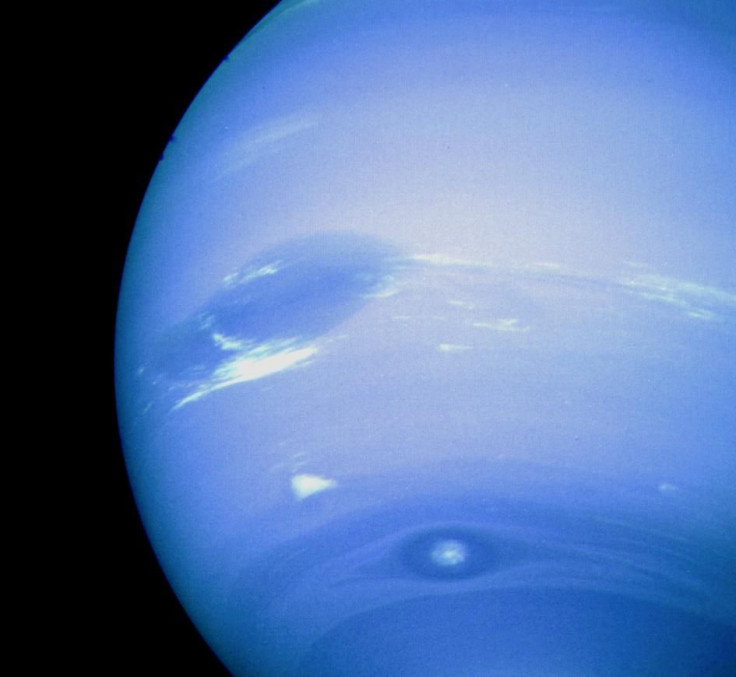Massive Storm On Neptune Changes Directions, Astronomers Baffled
KEY POINTS
- Astronomers studying Neptune have noticed a peculiar atmospheric behavior on the planet
- A mysterious dark spot has switched course, which is a never-before observed behavior
- NASA's Outer Planet Atmospheres Legacy (OPAL) program will continue to observe Neptune and its storms
Astronomers studying the dark, mysterious storm on Neptune using NASA’s Hubble Space Telescope were stunned when they saw the vortex steered away from its predicted destination, avoiding a likely death.
The storm was formed in the northern hemisphere of Neptune and was discovered by Hubble in 2018. Observations a year later found that they started to drift southward toward the equator, where such storms are supposed to fade from sight. To the shock of the observers, Hubble had detected a change in direction in the vortex by August 2020, moving back to the north.
While Hubble has tracked similar dark spots over the last 30 years, this erratic atmospheric behavior has not been observed before.

The storm was not alone too, making the whole thing all the more puzzling. In January of this year, Hubble noticed another smaller dark spot that had briefly emerged near its larger cousin. Perhaps it was a fragment of the massive vortex that broke apart, floated away, and then vanished in subsequent observations.
Astronomers theorize that this tiny "cousin" storm could be a fragment of the original storm that broke apart and drifted away.
"We are excited about these observations because this smaller dark fragment is potentially part of the dark spot’s disruption process," Michael H. Wong of the University of California at Berkeley said in a NASA statement. "This is a process that's never been observed. We have seen some other dark spots fading away and they're gone, but we've never seen anything disrupt, even though it’s predicted in computer simulations."
Usually, as the storms drift toward Neptune's equator, the Coriolis effect, which generally holds them stable, tends to diminish and the storm disintegrates. Yet, unlike previous storms and computer models that display storms taking a more or less straight course to the equator, this new vortex did not move to this "kill zone."
The new giant storm on Neptune has been the best-studied on the planet so far. For example, when Hubble first observed the storm, the telescope saw bright companion clouds around the vortex. These clouds are gone now, having dispersed when the storm stopped drifting southward. The absence of these clouds might likely disclose any secrets about the evolution of the dark spots.
There is still a lot of mystery about the Neptune storms, but NASA's Outer Planet Atmospheres Legacy (OPAL) program is bent on solving them. But for now, astronomers have their eyes focused on this particular enigmatic dark spot.
© Copyright IBTimes 2025. All rights reserved.





















